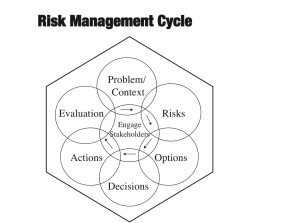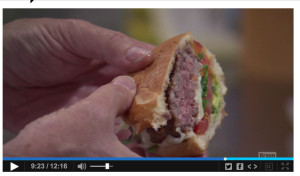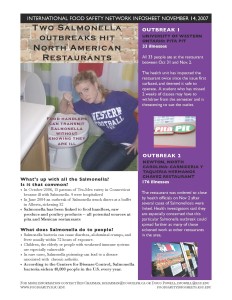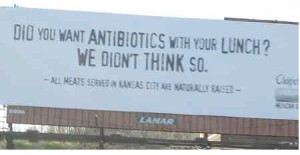Create, build, and they will come.
Start marketing microbial food safety and people will show.
Build a hockey rink, they’ll show.

Create, build, and they will come.
Start marketing microbial food safety and people will show.
Build a hockey rink, they’ll show.
 Carl’s Jr has set up shop in Bateau Bay near The Entrance, next to McDonald’s, and is offering a year’s worth of free burgers to the first 50 people through the door on Tuesday.
Carl’s Jr has set up shop in Bateau Bay near The Entrance, next to McDonald’s, and is offering a year’s worth of free burgers to the first 50 people through the door on Tuesday.
It’s a publicity stunt set to rival that of fellow US burger chain In-N-Out, which opened a four-hour pop-up restaurant in Surry Hills last month and sold out of product half an hour before the store opened.
Fritz Kriete, chair of the Food Industry Group at McNees Wallace & Nurick LLC, says these are five ways in which companies can protect themselves against food safety issues:
When it comes to foodborne outbreaks, it’s a matter of taking classic prevention and preparation steps. Do everything you can to keep it from happening, but be ready just in case it does.
(Technical difficulties: Written by Amy Hubbell not me — dp).
In Episode 5 of Bravo’s Last Chance Kitchen, Top Chef’s online spinoff, Tom Colicchio challenged the three chefs to make their best burger in 15 minutes.
One chef chose lamb, one chose to grind pork belly and mix it with beef, and the other did a beef and pork patty.
The food safety nerd in me knew there would be no time for thermometers and wondered how 15 minutes could be long enough to do all the prep and properly cook the meat. Yet among the chefs, there is a lot of talk about fear of overcooking the burgers.
Watch the tasting from the 8-minute mark here: http://www.bravotv.com/last-chance-kitchen/season-5/videos/lck-ep-5-a-delicious-burger
 When Tom cuts into the center of Burger #3, the beef-pork mix, it is apparently raw inside. “It’s a little raw dog,” says one competitor. “No! I think that’s a pretty sexy slice right there,” retorts Tom as he gobbles it.
When Tom cuts into the center of Burger #3, the beef-pork mix, it is apparently raw inside. “It’s a little raw dog,” says one competitor. “No! I think that’s a pretty sexy slice right there,” retorts Tom as he gobbles it.
And the raw burger wins. Tom apparently hasn’t died from E. coli yet.
A second Greenbrier teen has died and two more received medical treatment after officials said they drank a mixture of Mountain Dew and racing fuel last week.
On Thursday, authorities were called to the Franklin Farms home of 16-year-old Logan Stephenson, who was found dead in his bed.
Within minutes, they were called to a second home, on Cemetery Road, because the boy’s best friend had begun having seizures, Greenbrier Police Chief K.D. Smith said.
“We ask that everyone continue to pray for both of these families as they go through this tragic time,” Sheriff Bill Holt said in the department’s Tuesday release.
Since Stephenson’s death, two other teens have come forward, claiming they drank a similar substance, Smith said.
Four cases from Robertson County have been recorded with the Tennessee Poison Center at Vanderbilt University Medical Center, according to medical director Dr. Donna Seger.
Two of the teenagers were treated and released from two different emergency departments, Seger said.
Both teens said they had consumed a mixture of Mountain Dew and racing fuel, she said.
“They thought they knew what it was, that it was a substitute for alcohol,” Seger said. “They thought they would get the same effects as alcohol, but they weren’t aware of how toxic it was.”
Racing fuel, used in drag racing, is made up of almost 100% methanol, a non-drinkable form of alcohol used for industrial and automotive purposes, Seger said.
About 2003, Chapman and I were drinking beer after hockey, and thought, if entertainment pages were posted above urinals, why can’t we do the same with food safety information.
 So the manager at the bar above the rink agreed (probably because we were regulars, and used the urinal a lot) and food safety infosheets were born.
So the manager at the bar above the rink agreed (probably because we were regulars, and used the urinal a lot) and food safety infosheets were born.
We got a unique opportunity to study if they actually worked in a bunch of food service establishments (self-reported surveys suck).
This has been Chapman’s baby all along, and now that he’s a big-shot prof, he don’t do them too much.
That’s fine, we’ve always been more about ideas – a think piece – and others can implement them.
This piece of nostalgia was prompted by a report that South Canterbury’s public toilets have become a novel location for pitching road safety messages to tourist drivers.
Maps in public toilets showing crash sites over the past five years are giving safety warnings in Chinese, Indian, Japanese and Filipino (we did them in English, French, Spanish, some Chinese, some Portugese, depending on what students were around).
The maps, placed above urinals and on the inside of toilet doors, also link readers to websites with road safety messages in 14 languages.
Tourists are being given the safety warnings and driver tips at 60 public toilets around South Canterbury.
South Canterbury Road Safety co-ordinator Daniel Naude said the signs were mostly aimed at foreign tourists, and toilets provided a captive audience.
It was difficult to get people to read road safety information, but he realised signs in toilets could make for good reading for “30 seconds when there’s nothing to do.”
Duh.
Assessment of Food Safety Practices of Food Service Food Handlers: Testing a Communication Intervention
Chapman, Benjamin; Eversley, Tiffany; Filion, Katie; MacLaurin, Tanya; Powell, Douglas
Journal of Food Protection, Volume 73, Number 6, June 2010 , pp. 1101-1107
Globally, foodborne illness affects an estimated 30% of individuals annually. Meals prepared outside of the home are a risk factor for acquiring foodborne illness and have been implicated in up to 70% of traced outbreaks.
 The Centers for Disease Control and Prevention has called on food safety communicators to design new methods and messages aimed at increasing food safety risk-reduction practices from farm to fork. Food safety infosheets, a novel communication tool designed to appeal to food handlers and compel behavior change, were evaluated. Food safety infosheets were provided weekly to food handlers in working food service operations for 7 weeks. It was hypothesized that through the posting of food safety infosheets in highly visible locations, such as kitchen work areas and hand washing stations, that safe food handling behaviors of food service staff could be positively influenced. Using video observation, food handlers (n = 47) in eight food service operations were observed for a total of 348 h (pre- and postintervention combined). After the food safety infosheets were introduced, food handlers demonstrated a significant increase (6.7%, P < 0.05, 95% confidence interval) in mean hand washing attempts, and a significant reduction in indirect cross-contamination events (19.6%, P < 0.05, 95% confidence interval). Results of the research demonstrate that posting food safety infosheets is an effective intervention tool that positively influences the food safety behaviors of food handlers.
The Centers for Disease Control and Prevention has called on food safety communicators to design new methods and messages aimed at increasing food safety risk-reduction practices from farm to fork. Food safety infosheets, a novel communication tool designed to appeal to food handlers and compel behavior change, were evaluated. Food safety infosheets were provided weekly to food handlers in working food service operations for 7 weeks. It was hypothesized that through the posting of food safety infosheets in highly visible locations, such as kitchen work areas and hand washing stations, that safe food handling behaviors of food service staff could be positively influenced. Using video observation, food handlers (n = 47) in eight food service operations were observed for a total of 348 h (pre- and postintervention combined). After the food safety infosheets were introduced, food handlers demonstrated a significant increase (6.7%, P < 0.05, 95% confidence interval) in mean hand washing attempts, and a significant reduction in indirect cross-contamination events (19.6%, P < 0.05, 95% confidence interval). Results of the research demonstrate that posting food safety infosheets is an effective intervention tool that positively influences the food safety behaviors of food handlers.
Yes, I said it.
 Sure it was 4 a.m., I was talking with Joseph Erbentraut of The Huffington Post, getting ready for hockey, and didn’t want to deal with niceties.
Sure it was 4 a.m., I was talking with Joseph Erbentraut of The Huffington Post, getting ready for hockey, and didn’t want to deal with niceties.
It’s been six months since the start of Chipotle’s food safety crisis — a series of six outbreaks that have sickened at least 500 people.
The company has apologized for the outbreaks of norovirus and E. coli, tweaked its cooking methods and announced that it will temporarily close all its stores for a companywide food safety meeting on Feb. 8. But with an investigation by the Centers for Disease Control and Prevention still underway, it appears the company still hasn’t identified the source of the contamination.
Chipotle spokesman Chris Arnold pointed The Huffington Post to a Jan. 19 press release announcing that the company’s “comprehensive new food safety programs” are largely already in place, and that it will be sharing information with its employees at the Feb. 8 meeting about what they believe caused the food safety issues.
Doug Powell, a former Kansas State University food safety professor and the publisher and editor of Barfblog, a popular food safety blog, isn’t convinced. He’s been wary of Chipotle for almost a decade now, and has his doubts that the company’s new approach will solve anything.
HuffPost recently spoke with Powell about why Chipotle has struggled in its response to the outbreaks — and what it should be doing instead.
This interview has been edited for length and clarity.
Why is it taking Chipotle so long to figure out the source of this E. coli outbreak, compared to the other food safety issues they’ve had over this last year?
 Never underestimate the power of denial. The epidemiology is clear that there was an outbreak involving E. coli O26, and in this case it was probably from the cilantro or some other fresh produce item that wasn’t cooked. Fresh produce is the biggest source of foodborne illness in the U.S. and has been for the last 10 years, and that’s because it’s not cooked. We want it fresh.
Never underestimate the power of denial. The epidemiology is clear that there was an outbreak involving E. coli O26, and in this case it was probably from the cilantro or some other fresh produce item that wasn’t cooked. Fresh produce is the biggest source of foodborne illness in the U.S. and has been for the last 10 years, and that’s because it’s not cooked. We want it fresh.
Somehow in the last five years in the U.S., the produce folks have gotten much more aggressive about having to test [bacteria] in the product and find it. Tell any scientist that and they’ll say that’s bullshit, because it’s a fresh product, so it’s here and gone and we’re not going to find [bacteria]. Testing really only tells you that this one really minor sample, in this one batch, in one lot, came back negative. It doesn’t tell you much else. You can’t test your way to a safe food supply.
Chipotle has really built its brand around using fresh produce, and consumer demand for food like this has been rising. So the company has put itself in this risky position, right?
It doesn’t have to increase the risk. It means that they have to be better at having on-farm food safety plans for their suppliers and enforcing them. It seems to me that Chipotle was much more concerned about being natural, sustainable, GMO-free, hormone-free — anything but microbiologically safe — and that’s why they’ve had six outbreaks in six months. The two norovirus outbreaks have nothing to do with the on-farm contamination. That’s human.
They say they’ve introduced sick leave [on Wednesday], but they actually had it six months ago. They’re recycling press releases at this point, which tells me they’re kind of desperate. They’re all about the money and they’ve lost 47 percent of their stock value.
The company is facing a new class-action lawsuit this week, where it’s being accused of a cover-up in the norovirus outbreak in Simi Valley, California. How much damage has this done to Chipotle’s brand at this point?
It’s billions of dollars. It’s embarrassing that a company is allowed to get away with this sort of stuff, these multiple failures, while at the same time they’re charging a premium for “sustainable” food, whatever that means. All these adjectives that they use in their marketing don’t really mean anything. This is a company really focused on bullshit rather than being focused on microbiologically safe food. [Chipotle has emphasized that it is just as dedicated to using what it calls the highest-quality ingredients as it is to being an industry leader in food safety.]
Does the question of government regulation play a role in this?
Government is there to ensure a minimum standard. But they do not make the profit and they do not really enforce safe food. That is up to the company… You want to make the profit off the food, you’re going to be liable. So they’re taking some well-deserved hits at this point. Whether they’ll recover or not — they can, but just going to the PR solution and this gimmick of shutting all the stores down for two hours on Feb. 8 isn’t how you do training. It takes every week reinforcing the messages and focusing on one goal.
What should Chipotle be doing right now that it isn’t already? Are there examples to look to of similar companies that have handled this effectively?
They’ve followed the Jack in the Box model from 1993 in that they hired some food safety consultants and they’re listening to them. That’s good, but that is not going to change the culture within the organization. Those two norovirus outbreaks are cultural things more than anything. That’s not some mysterious bug coming in — it’s employees showing up sick to work. They can say they have strict procedures that sick employees don’t work, but anyone who’s ever worked at a restaurant knows what happens when you don’t show up to work. You’re done.
I don’t see, so far, that they’ve gotten that religious about food safety. They’ve hired some good consultants and they’ll do more testing and that’s all good, but when you’ve got 2,000 locations, that’s a pretty big vulnerability.
And get off my bench, posers.
The internet has become an increasingly important way of communicating with consumers about food risk information. However, relatively little is known about how consumers evaluate and come to trust the information they encounter online.
Using the example of unpasteurized or raw milk this paper presents two studies exploring the trust factors associated with online information about the risks and benefits of raw milk consumption.
In the first study, eye-tracking data was collected from 33 pasteurised milk consumers whilst they viewed six different milk related websites. A descriptive analysis of the eye-tracking data was conducted to explore viewing patterns. Reports revealed the importance of images as a way of capturing initial attention and foregrounding other features and highlighted the significance of introductory text within a homepage.
In the second, qualitative study, 41 consumers, some of whom drank raw milk, viewed a selection of milk related websites before participating in either a group discussion or interview. Seventeen of the participants also took part in a follow up telephone interview 2 weeks later. The qualitative data supports the importance of good design whilst noting that balance, authorship agenda, the nature of evidence and personal relevance were also key factors affecting consumers trust judgements.
The results of both studies provide support for a staged approach to online trust in which consumers engage in a more rapid, heuristic assessment of a site before moving on to a more in-depth evaluation of the information available. Findings are discussed in relation to the development of trustworthy online food safety resources.
Examining trust factors in online food risk information: The case of unpasteurized or ‘raw’ milk
Appetite Available online 12 January 2016
Elizabeth Sillence, (Dr), Claire Hardy, Lydia C. Medeiros, Jeffrey T. LeJeune
http://www.sciencedirect.com/science/article/pii/S0195666316300095
The Belgians have a new name for food safety culture: it’s food safety climate.
 Human behavior and decision-making of employees can be influenced by the food safety climate prevailing in an organization.
Human behavior and decision-making of employees can be influenced by the food safety climate prevailing in an organization.
Four farm based and four affiliated centrally managed butcheries were screened on their food safety climate and level of implemented food safety management system, by application of self-assessment questionnaires. Besides, by product and environmental microbiological sampling, objective data on hygiene status were collected. The food safety climate was scored significantly higher in the centrally managed butcher shops compared to the independent small scale farm butcheries, mainly for the components ‘leadership’ and ‘communication’ while ‘risk awareness’ and ‘commitment’ were equally evaluated.
Food safety climate’ component ‘resources’ was perceived higher in the affiliated butchers shops, but not statistical significant. The study demonstrated that affiliated butcher shops are able to achieve a better microbiological hygiene and safety status, because both a well-elaborated food safety management system and a favorable food safety climate is present in the affiliates. While in the investigated farm butcheries, the overall lower hygiene and safety status is likely to be related to their lower food safety climate score in combination with a more basic food safety management system.
This semi-quantitative case study revealed that employees’ perception of a favorable food safety climate in combination with a fit-for-purpose food safety management system is likely to result in a good and stable microbiological output in food companies.
Interplay between food safety climate, food safety management system and microbiological hygiene in farm butcheries and affiliated butcher shops
Food Control, Available online 12 January 2016
http://www.sciencedirect.com/science/article/pii/S0956713516300159
For whatever reason – money – Chipotle investors and apologists are willing to look beyond the company’s many failings.
 If Chipotle really wanted to be a leader, they would have embraced microbiologically safe food and internal verification long before the 2015 outbreaks.
If Chipotle really wanted to be a leader, they would have embraced microbiologically safe food and internal verification long before the 2015 outbreaks.
If Chipotle really wanted to be a leader they’d stop playing to consumer fears with their advertising.
If Chipotle really wanted to be a leader, they would embrace genetically engineered foods that require fewer and far less harmful pesticides.
Chipotle is a follower, sucking up dollars wherever it can.
In its latest PR rah-rah stunt, Chipotle is going to close all of its 1,900 outlets on Feb. 8 for a few hours “for company executives to be transparent about the status of the E. coli outbreak, and what Chipotle is doing to prevent it from happening again.”
Chipotle’s stock price sits is currently down around 40% off its 52-week high, as the outbreak news hurt sales more than had been expected. The company has advised investors that it could be a few rocky quarters before Chipotle sees a definitive, positive improvement.
In an effort to bring back some of the customers it’s lost, Chipotle co-CEO Monty Moran said Wednesday it will be doubling the amount of free food restaurants can give away to its customers, reports CNBC.com.
The New York Times says, with a straight face, Chipotle’s new mantra is “Safe food, not just fresh” while gushing that, “From its start in 1993 as a burrito stand in Denver opened by a young Culinary Institute of America-trained chef who borrowed money from his parents, Chipotle now has more than 2,000 locations. Its stock nearly doubled over the last five years, and in August the company reached a market value of $23 billion.
 “Chipotle emphasizes fresh, locally sourced ingredients. It was the first major chain to reject genetically modified food. Chipotle has embodied the notion of doing well by doing good.”
“Chipotle emphasizes fresh, locally sourced ingredients. It was the first major chain to reject genetically modified food. Chipotle has embodied the notion of doing well by doing good.”
That’s not doing anyone any good.
It’s marketing BS.
Consumers aren’t so dumb or confused. Chipotle said same-store sales dropped a greater-than-expected 14.6 percent in the last quarter, and analysts have been scrambling to downgrade their ratings. On Tuesday, Chipotle shares dipped below $400 and were down 47 percent from the August high.
Two of the incidents, the one in Simi Valley, Calif., in August that sickened 234 people, and another in Boston in December, which affected at least 136 customers, were linked to a norovirus, a highly contagious virus that causes gastroenteritis. It is spread through contact with an infected person, a surface bearing the virus, or by contaminated food.
Chipotle has said both outbreaks were caused by sick employees who ignored strict policies prohibiting them from coming to work and, without elaborating, said that disciplinary measures were meted out to those responsible.
Anyone can say they have strict policies (Heston-norovirus-isn’t-my-fault Blumenthal comes to mind) but verification, that takes effort.
In August, 64 people were treated for salmonella after eating at a Chipotle in Minnesota. Fresh tomatoes were identified as the culprit.
Chipotle shares have jumped nearly 14 percent over the last two days after company executives gave an upbeat presentation to investors, bankers and analysts at the ICR investor conference in Orlando, Fla., where they predicted the brand would regain its luster and reiterated an aggressive expansion and growth plan.
Follow the money.